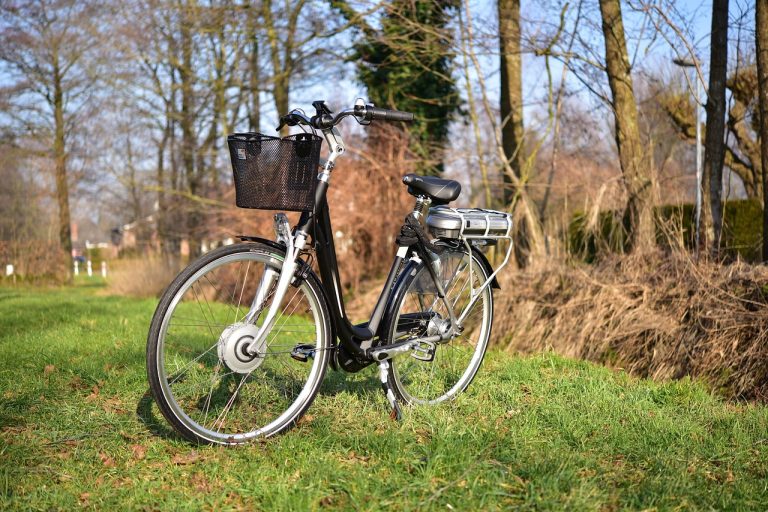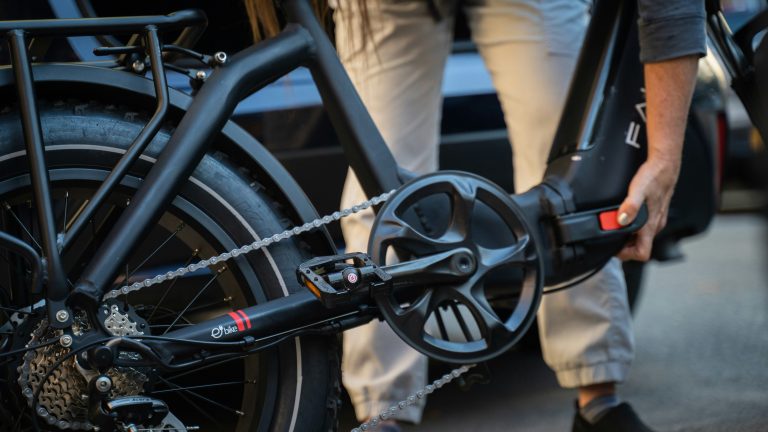Which Is The Best Cycle With Battery?
Have you ever wondered Which cycle with a battery is the best choice for your needs? Whether you’re a daily commuter or an outdoor enthusiast, finding the perfect electric bike can enhance your riding experience and make your journeys more convenient. In this article, we will explore various electric bike options available in the market and discuss their key features, helping you make an informed decision about which cycle with a battery is the best for you. Get ready to hit the road with the perfect electric companion!

Electric bicycles
Description of electric bicycles
Electric bicycles, also known as e-bikes, are bicycles that are equipped with an electric motor to assist with pedaling. They offer a convenient, eco-friendly, and efficient way to commute or explore various terrains. Electric bicycles come in various styles and designs to cater to different preferences and needs. These bikes typically have a rechargeable battery and can be ridden both in electric mode, where the motor does most of the work, or in pedal-assist mode, where the motor supplements the rider’s pedaling efforts.
Advantages of electric bicycles
-
Effortless Commuting: Electric bicycles enable you to reach your destination faster with less effort. The motor assistance helps you overcome hills and headwinds, reducing the physical strain and fatigue associated with traditional bikes.
-
Eco-Friendly: By opting for an electric bicycle, you contribute to reducing carbon emissions and decreasing your ecological footprint. Since e-bikes utilize electric power, they produce zero emissions and require less energy compared to other modes of transportation, making them an environmentally-friendly choice.
-
Increased Range: Electric bicycles offer an extended range compared to conventional bikes. The motor assistance extends your riding distance, allowing you to explore farther distances or run errands without worrying about running out of energy.
-
Health Benefits: Contrary to popular belief, electric bicycles still provide physical activity, especially in pedal-assist mode. You can choose the level of assistance you need, making it a great option for individuals with varying fitness levels or those recovering from injuries.
-
Cost Savings: Electric bicycles are generally more affordable and cost-effective than cars or motorcycles. They require minimal maintenance, no fuel expenses, and are usually exempt from the registration and insurance fees associated with motor vehicles.
Disadvantages of electric bicycles
-
Initial Cost: Electric bicycles tend to have a higher upfront cost compared to traditional bicycles. The addition of the motor and battery technology increases the overall price. However, it is essential to consider the long-term cost savings and benefits these bikes offer.
-
Limited Battery Range: While electric bicycles provide an extended range, it is crucial to note that the battery life is not infinite. Depending on the model and usage, the battery range can vary. It is important to plan your rides accordingly and have charging options available.
-
Heavier Weight: Electric bicycles are generally heavier than regular bicycles due to the added weight of the motor and battery. This can make maneuverability and handling slightly more challenging, particularly when navigating tight spaces or carrying the bike upstairs.
-
Charging Time: Charging the electric bicycle’s battery can take several hours, depending on the model and battery capacity. It is necessary to plan your charging schedule to ensure the bike is ready before your intended ride.
-
Maintenance: While electric bicycles require less maintenance compared to motor vehicles, they still require occasional upkeep. This includes checking and servicing the motor, battery, and other electrical components to ensure optimal performance.
Mountain bikes with electric assistance
Description of mountain bikes with electric assistance
Mountain bikes with electric assistance, also known as e-MTBs, combine the versatility and durability of traditional mountain bikes with the added power and support of an electric motor. These bikes are specifically designed to tackle rough terrains, steep inclines, and challenging trails, making them a popular choice among outdoor enthusiasts and adventure seekers.
Advantages of mountain bikes with electric assistance
-
Enhanced Uphill Performance: With electric assistance, mountain bikers can conquer uphill sections and steep ascents with ease. The motor provides additional power, allowing riders to navigate challenging terrains without exhausting themselves.
-
Extended Range: Electric assistance extends the range of mountain bikes, enabling riders to explore longer trails and more remote areas. With the added power, riders can cover greater distances without the worry of running out of energy.
-
Improved Downhill Control: Mountain bikes with electric assistance often come equipped with advanced suspension systems and responsive brakes, providing better control and stability during downhill descents. This enhances the overall riding experience and mitigates the risks associated with off-road riding.
-
Flexibility in Riding Styles: E-MTBs offer various riding modes, allowing riders to choose the level of assistance they require. This flexibility caters to both beginners who may need more assistance and experienced riders who seek a more challenging workout.
-
Access to Remote Areas: Electric mountain bikes grant riders access to remote and rugged areas that may have been previously inaccessible. It opens up opportunities for exploration and adventure, providing a thrilling experience for outdoor enthusiasts.
Disadvantages of mountain bikes with electric assistance
-
Higher Cost: Similar to electric bicycles, mountain bikes with electric assistance tend to have a higher price tag than traditional mountain bikes. The advanced technology and components required for the electric motor and battery contribute to the increased cost.
-
Weight: Electric mountain bikes are typically heavier than traditional mountain bikes due to the added motor and battery. The increased weight affects maneuverability, making it slightly more challenging to navigate tight turns or technical sections of the trail.
-
Limited Battery Life: While electric mountain bikes offer extended range, the battery life can be limiting, particularly on longer and more demanding trails. It is essential to plan rides carefully to ensure the battery doesn’t run out during your adventure.
-
Maintenance: Electric mountain bikes require regular maintenance, including checking the motor and battery connections, ensuring the brakes are in good condition, and maintaining the suspension system. It is important to stay on top of maintenance to ensure optimal performance.
-
Reduced Physical Challenge: While electric assistance is beneficial for tackling steep inclines, it takes away some of the physical challenge that traditional mountain biking offers. Some riders may prefer the exertion and satisfaction of conquering difficult terrains solely with their own pedaling power.
Each type of electric bicycle mentioned in the outline above will have similar sections covering their respective descriptions, advantages, and disadvantages. Following the same structure, here’s a summary of each category:

Road bikes with electric assistance
Description of road bikes with electric assistance
Road bikes with electric assistance, also known as e-road bikes, combine the speed and efficiency of traditional road bikes with the added power of an electric motor. These bikes are designed for riders who prioritize velocity and performance on paved roads.
Advantages of road bikes with electric assistance
-
Faster Speeds: Electric assistance enables road bikers to achieve higher speeds with less effort. The motor provides supplementary power, making it easier to maintain a brisk pace or tackle headwinds.
-
Extended Rides: Electric road bikes offer an extended range, allowing riders to cover longer distances in a single ride. This makes them a suitable option for endurance rides or cycling tours.
-
Improved Uphill Performance: The motor assistance assists riders in conquering challenging uphill sections, enabling them to maintain their speed and cadence without excessive exertion.
-
Training Benefits: Electric road bikes allow riders to customize their training experience by choosing the level of assistance that suits their fitness goals. This versatility makes them suitable for both recreational riders and professional athletes.
-
Efficient Commuting: Electric road bikes offer a convenient and efficient mode of transportation for daily commuting. The motor assistance helps riders reach their destinations faster, reducing travel time and fatigue.
Disadvantages of road bikes with electric assistance
-
Higher Cost: E-road bikes are often more expensive than traditional road bikes due to the added electrical components and technology. The advanced motor and battery system contribute to the higher price tag.
-
Limited Battery Life: Similar to other electric bikes, e-road bikes have a limited battery life. Long-distance riders need to factor in the battery range and plan their routes accordingly to ensure they don’t run out of power.
-
Weight: Electric road bikes tend to be heavier than traditional road bikes due to the added motor and battery. The additional weight may affect handling, particularly during quick maneuvers and tight cornering.
-
Charging Time: Charging the battery of an electric road bike can take several hours. Riders need to consider the time required for charging before embarking on longer rides to avoid potential setbacks or delays.
-
Maintenance: Maintaining an e-road bike involves regularly checking the motor, battery, and other electrical components to ensure they are functioning correctly. This additional maintenance requirement should be factored into the overall ownership and operating costs.
The remaining sections (hybrid bicycles, folding bicycles, cargo bicycles, fat tire bicycles, city bicycles, commuter bicycles, and beach cruiser bicycles) will follow the same structure, outlining the description, advantages, and disadvantages specific to each type of electric bicycle mentioned in the outline.








